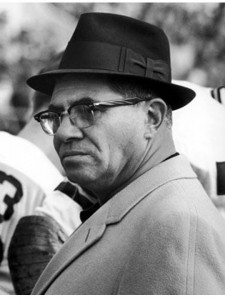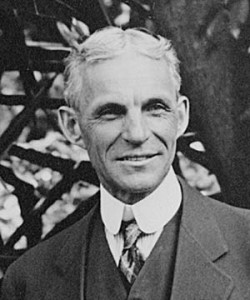 Recruiting is a tough business; an activity oriented phone- and Internet-based business where statistics indicate that nine out of ten new recruits don’t survive their first calendar year. It’s also one of the only businesses where the product can tell you “no.” Add to these inherent challenges the fact that research shows the average US worker wastes 26% of their day on socializing and personal Internet use (Malachowski, 2005), which is probably closer to 40% now that social media has taken over with Facebook and Twitter. The ability for a manager to develop a strong culture of performance is extremely difficult, if not outright impossible.
Recruiting is a tough business; an activity oriented phone- and Internet-based business where statistics indicate that nine out of ten new recruits don’t survive their first calendar year. It’s also one of the only businesses where the product can tell you “no.” Add to these inherent challenges the fact that research shows the average US worker wastes 26% of their day on socializing and personal Internet use (Malachowski, 2005), which is probably closer to 40% now that social media has taken over with Facebook and Twitter. The ability for a manager to develop a strong culture of performance is extremely difficult, if not outright impossible.
Some organizations manage to do this despite the challenges. How do they do it? How do they grow aggressively and reach 50-100 employees while others struggle to hire and keep a few productive ones? The answer: successful owners and managers develop a strong culture of performance.
Winning professional sports teams are excellent examples of how to develop effective cultures of performance. If you followed the New England Patriots in the 2000s you saw a complete 180-degree change in the culture of performance. When Bill Belichick came to the Patriots, he inherited a culture of individual performance over team performance. He had to quickly make changes to the existing system to change the culture. He changed the focus to acknowledging individual performances only to the extent that they made an impact on and added to a winning team — but if the team lost, everyone lost. Now there was a stronger reason for higher level of personal performances that added to the greater good. In 2007, the New England Patriots went undefeated in the regular season. When you walked into Gillette Stadium you could tell the difference; the atmosphere had changed. Everyone felt a much higher level of intensity and anticipation — the players, the coaches, and the fans. When a true culture of performance is established, winning isn’t just desired — it’s expected.
When it comes to developing a winning culture, sports teams often have the advantage over recruiting firms. They have a high supply of quality talent coming from the college programs that keep the benches full of qualified players waiting to come in and play. The starters know this and they do everything in their power to perform to keep their positions. Secondly, the players are paid to WIN. When professional sports players forget the latter, they, along with their managers, find themselves out of a job. Remember — it’s all about the “W.”
 Winning Must Be Valued
Winning Must Be Valued
“Winning isn’t everything, but the will to win is everything.” – Vince Lombardi
We live in a society where value is now being placed on just participating and not necessarily winning. We have graduation ceremonies for kids making it out of 6th grade and every kid today in sports gets a treat after each game and a trophy at the end of the year — no matter how the performance ranked. Look around you in your recruiting office. Are there individuals who are OK just participating, those who don’t put enough effort in to “win” on a consistent basis? To develop a culture of performance a high value must be placed on WINNING — and it has to be valued by both the coach and the players in order for it to exist.
In recruiting, this means everyone must be focused on hitting metric targets and revenue goals, not only from an individual perspective but from a company and team perspective, as well. Many individuals focus on hitting monthly, quarterly, and yearly targets or quotas that have been decided but do not increase performance once these objectives are met.
In organizations where winning is not valued, winning often does not occur. A great example of this was the Cincinnati Bengals of the 1990s. Since the owner Mike Brown focused on making money and not on winning, the culture of performance was not a priority. The organization made money, however the team and the fans lost a lot. The Bengals lost the most games out of any other NFL franchise in the ‘90s. You could feel it in the air as you watched the games. You had a feeling they would end up losing, even if they were winning at the beginning or end of the game.
Individual and Team Goals
 “It is not the mountain we conquer, but ourselves.” – Earl Nightingale
“It is not the mountain we conquer, but ourselves.” – Earl Nightingale
Setting goals is imperative to creating a culture of performance. Goals must not only be known, they also must be displayed and focused on. Individuals need to know not only their year –end goals to shoot for, but also the quarterly, monthly, weekly, and daily goals that need to be met in order to reach that yearly target. Offices with a strong culture of performance understand that daily goals need to be focused on and met by each individual. They are displayed at each person’s desk and there is an awareness of each member of the team; and they take it seriously. At lunchtime, individuals focused on their daily goals will check their phone time and number of calls made to make sure they are on target. At the end of the day, those focused on their goals will do what it takes to hit their new job orders, send outs and Quality Candidate targets. Having an intense focus on daily goals goes a long way to ensuring that weekly, monthly, quarterly, and yearly targets are achieved.
Offices with a culture of performance also focus on team goals. Monthly, quarterly, and yearly targets are set to encourage individuals to rally and come together for a common cause. Team goals are displayed in as many places as possible to reinforce the message, and often some method of tracking and posting progress is also shown to keep the goal current. Everyone is continually reminded of what the team goal is and what needs to be done to get there.
 “When a team outgrows individual performance and learns team confidence, excellence becomes a reality.” – Joe Paterno, Penn State Coach
“When a team outgrows individual performance and learns team confidence, excellence becomes a reality.” – Joe Paterno, Penn State Coach
Environment Where Winning Thrives
In order to enable goal achievement, having an environment that encourages winning certainly helps. Creating buzz is an important management technique used for years in many telephone-oriented businesses. The term buzz simply means that the environment sounds like things are happening. To create buzz, many offices put in sound systems, play “white noise” or in my office we play XM/Sirius radio. The bottom line for success in recruiting is that you need people on the phone. In the morning when things are slow, to help create more buzz, I often crank the radio up a few notches. This makes people talk on the phone louder and gets the others on the phone. It usually gets an immediate response and when the buzz in the office is at an acceptable level, I turn the music back down. Our office also has Big Screen TVs playing CNN or Fox News with no sound. We want the environment to feel like things are fast-paced and things are happening. It has been proven that music and sound can affect the productivity of employees.
 It is always important to celebrate every win with some type of noise and attention. Most offices use some way of immediately get- ting attention for placements that occur, like banging a gong, ringing a bell, bellowing from a bullhorn, or stopping production altogether to announce and discuss the de- tails. Whatever the chosen method, offices with a strong performance culture get the entire team involved in making some noise and celebrating the win.
It is always important to celebrate every win with some type of noise and attention. Most offices use some way of immediately get- ting attention for placements that occur, like banging a gong, ringing a bell, bellowing from a bullhorn, or stopping production altogether to announce and discuss the de- tails. Whatever the chosen method, offices with a strong performance culture get the entire team involved in making some noise and celebrating the win.
“ Excellence is not a skill. It is an attitude.” – Ralph Marston
Many offices also create awareness of activity going on by the use of white boards in locations that are out in the open and constructed to publish activity and results. Watching a coworker walk to the board repeatedly during the day to record send outs or new job orders that they got that day works well to get the others in the office motivated to make it happen. It allows individuals to get recognized for their efforts and spurs competition.
Competition is Encouraged
Competition brings out the best in people and there cannot be a true performance culture in place without it. Whether it is competing for recognition in an office environment or a trip to Hawaii, it works. To build a strong performance-based culture, the more you can establish an aggressive yet friendly competitive environment, the more the team will work to encourage all to participate.
 “The essence of competitiveness is liberated when we make people believe that what they think and do is important — and then get out of their way while they do it.” – Jack Welch
“The essence of competitiveness is liberated when we make people believe that what they think and do is important — and then get out of their way while they do it.” – Jack Welch
As a manager, I try to get my recruiters to compete for the most phone time, job orders, sendouts, and placements. If newer employees can’t yet compete with tenured individuals on the results side, they can still compete with them on activity. Activity competition helps keep tenured staff from resting on their laurels. Once major ac- counts are established, many experienced individuals tend to stop doing the developmental activity that is needed to keep them at the top of their game. Competition helps them get the activity up to where it is needed.
Reward Performance
Having a system of rewards for performance is imperative to establishing and continuing a culture of high performance. If individuals and teams do not receive recognition for their efforts, they will not be motivated to continue achieving greater results. Acknowledge the end result. Placements are the “W” in our business and it is important to generate energy and enthusiasm for those who make it happen. When someone makes a placement in our office, we take a bell and ring it as loudly as possible. Everyone gets off the phone, stands up, and gives a high five to the person who made the placement. The peer recognition for the placement and the management “at-a-boy” recognition… all go a long way in helping to encourage more placements and results.
What’s more important, however, is that we equally reward the ACTIVITY that leads to the placement. When phone time, number of calls, sendouts, and Job Order targets are met, a reward system needs to be in place to recognize the effort and the accomplishment of the things necessary to achieve the end result. Results are only the product of executing all the critical steps in the process — the activities.
Every Tuesday we take a look at activity for each individual in our office and point out in a public setting the excellence in activity that will eventually lead to a positive end-result. The more an office focuses on rewarding the activities that lead to placements, the better the culture of performance becomes. When our office has sales contests, we don’t reward for placements. The recruiters already get a big com- mission check for the placement. We reward for activity — Send- outs, new Job Orders, and Marketing Presentations.
Conclusion
 Leadership is crucial in developing and maintaining a strong culture of performance. Any business can develop a performance- driven environment — but it has to be managed. A good leader will foster an office culture where winning (Making Placements) is highly valued, individual and team goals are established and focused on, an atmosphere of friendly competition is encouraged and openly acknowledged, and rewards are not only for results but, more importantly, for the activity that leads to the results. You can change an organization almost overnight; just focus on changing the culture.
Leadership is crucial in developing and maintaining a strong culture of performance. Any business can develop a performance- driven environment — but it has to be managed. A good leader will foster an office culture where winning (Making Placements) is highly valued, individual and team goals are established and focused on, an atmosphere of friendly competition is encouraged and openly acknowledged, and rewards are not only for results but, more importantly, for the activity that leads to the results. You can change an organization almost overnight; just focus on changing the culture.
“Coming together is a beginning. Keeping together is progress. Working together is success.” – Henry Ford
this article is from the October 2010 print Fordyce Letter. To subscribe and receive a monthly print issue, please go to our Subscription Services page.